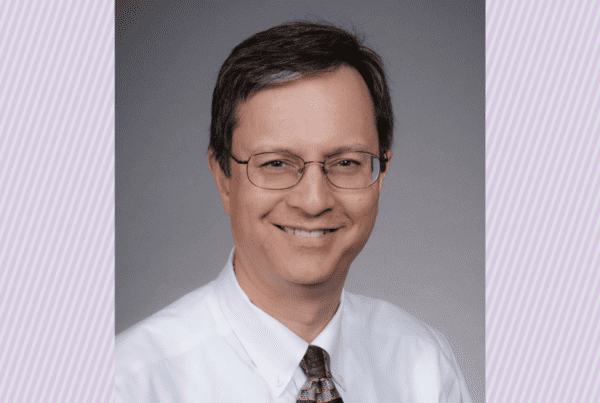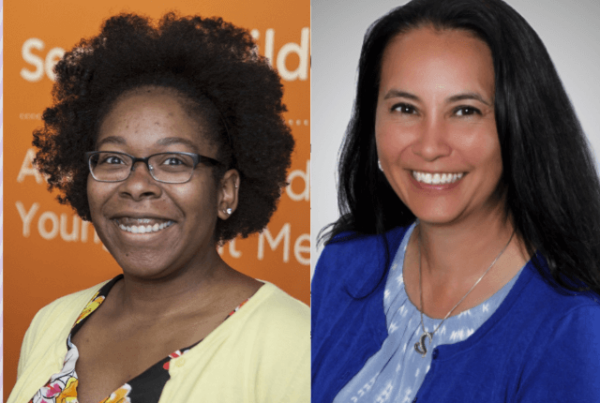G. Burkhard Mackensen, MD, PhD, FASE, chair of the Department of Anesthesiology & Pain Medicine and director of Interventional Echocardiography at the UW Medicine Heart Institute, is pushing the envelope on what anesthesiologists do.
Read on to learn what inspired him to go into anesthesiology and subspecialize in cardiothoracic anesthesiology and interventional echocardiography. Plus, find out what’s new in the field and Mackensen’s vision for the department as chair.
What made you want to go into anesthesiology and pain medicine?
Initially, I started in internal medicine, and I always had an interest in cardiology and the heart. However, after initial exposure to internal medicine, I had some second thoughts and went into anesthesiology and never looked back.
The biggest reason I went into anesthesiology and pain medicine is the opportunity to work with patients throughout their entire hospital experience and be positioned like no other specialty is to collaborate. Anesthesiologists are a connecting element in our hospitals — we work with surgeons, proceduralists and colleagues from all other fields of medicine such as neurology, pulmonary medicine or cardiology.
You are also the director of Interventional Echocardiography at the UW Medicine Heart Institute, what inspired your subspecialty?
Beyond always having an interest in the heart, the interdisciplinary nature of the job inspired my subspecialization in the emerging field of interventional echocardiography.
I’ve always pushed the limits of what an anesthesiologist can do. I’ve worked mostly as a cardiothoracic anesthesiologist. I completed training in cardiothoracic anesthesiology — my subspecialty — to take care of patients that undergo open-heart surgery, thoracic surgery, lung surgery, lung transplantation and heart transplantation. And that’s how I became more familiar with the heart.
As part of my cardiothoracic anesthesiology fellowship at Duke University Medical Center, I trained in transesophageal echocardiography (TEE) — an ultrasound tool used to monitor the patient’s heart, make a diagnosis, look at heart valves before and after operations, and really get a granular scan. Our ability to image the heart in 2D and 3D with that technology is just spectacular. Over the last seven to eight years, I’ve become an expert at guiding transcatheter heart valve interventions and I am honored to serve on the Board of Directors of the American Society of Echocardiography (ASE), as the chair of the ASE’s Industry Roundtable committee (IRT), the chair of the ASE’s Council on Perioperative Echocardiography (COPE), and on the ASE’s leadership team of the Specialty Interest Group (SIG) on Interventional Echocardiography.
Until recently, I also worked as a critical care physician in the Cardiothoracic Surgery Intensive Care Unit (CT ICU). There I saw patients that need close attention during recovery from their heart transplant, lung transplant or open-heart operation. It’s a common training path to be an anesthesiologist first and then train in critical care medicine and combine the two. At UW Medicine, there are actually several critical care units that are led and directed by anesthesiologists also working as critical care physicians.
What are your research interests?
I’ve been particularly interested in research around perioperative outcomes of patients undergoing heart surgery, focusing on the well-being of the brain (aka, neuroprotection). For example, if a patient has open heart surgery and we fix or replace a heart valve, but then they have a stroke, there is nothing more devastating than having one issue fixed just for more issues to arise.
I’ve also researched the harmful effects of the heart-lung machine, which is a machine that supports the patient when the heart is being stopped and helps the surgical team circulate blood flow to all the important organs. The machine is a blessing, and it allows us to do certain life-saving heart surgeries. Still, it comes with potentially harmful side effects like producing an inflammatory reaction in the patient or the generation of emboli and blood clots — particulate material that could travel up to the brain.
More recently, I have also focused my research on the utility of echocardiography in procedural image guidance and in quantifying outcomes after structural heart valve interventions.
What do you like most about working at UW Medicine?
It’s the depth and breadth of multidisciplinary research, educational opportunities and clinical work that UW Medicine and the people that work and learn here pursue. When you look at National Institutes of Health (NIH) dollars for fiscal year 2021, UW Medicine is second only to Harvard and that’s a big deal. It’s the enormity of the opportunities that come with so many people pursuing such multidisciplinary efforts regarding clinical work, research and educational opportunities all in support of our mission to improve the health of the public.
What is your vision for the Anesthesiology & Pain Medicine Department?
As perioperative physicians, we have a unique opportunity to improve the patient’s whole perioperative experience — we see the patient before the operation, in the OR and when they transition to the Postanesthesia Care Unit (PACU) or ICU where they recover and are treated for any procedure-related pain. As chair, I want to pursue our ability to look at outcomes throughout the perioperative experience and expand our existing outcomes database research PPIQSO (pronounced like Picasso).
More globally, my vision includes expanding our integrated clinical, research and learning missions. I also want to create a better understanding of what anesthesiologists do and describe who we are. As anesthesiologists, we’ve done ourselves a disservice in not being clear about how we contribute to the health of the public. As anesthesiologists, we enable our surgical and procedural partners to provide the highest quality of safe, value-based care, thereby permitting them to be productive. We are responsible for efficient and coordinated perioperative care that safely guides the patient throughout the entire surgical or procedural experience, and we lead patient-centered, multidisciplinary teams, ultimately realizing enhanced recovery and improved short and long-term outcomes.
What influences your leadership style?
I am passionate about the difference between competence and excellence. In my own practice, I’m always trying to do better and achieve excellence. I have high expectations for myself and others too. We work with humans who entrust their lives to us, and we have full responsibility for their well-being, so there is no room for compromise; our work needs to be excellent and of the highest quality.
What’s new and exciting in anesthesiology and pain medicine?
There is a growing opportunity to work with other specialties to further optimize patient care in its broadest sense and, more specifically, to use opportunities in personalized medicine, artificial intelligence and large database research to inform best practices.
In our department, we have large basic science labs that are super successful. NAPE (UW Center of Excellence in Neurobiology of Addiction, Pain, and Emotion) is one of those labs and my colleagues there are unraveling the reasons why we become addicted to pain medicines like opioids. At the Mitochondrial and Metabolism Center (MMC), our department has large teams that are actively engaged in advancing scientific discoveries to address mitochondrial dysfunction that lead to improvements in diagnosis and treatment for many cardiovascular conditions.
Another example of exciting basic science research is that we have investigators in our department and at the Seattle Children’s Research Institute that are close to finding out why inhaled anesthetics make you unconscious and why they produce anesthesia. If answered, it could tell us more precisely how to prevent potential side effects of an anesthetic and help us steer the anesthetic on a personalized medicine basis.
What do you like to do outside of work?
I’m notorious for doing long-distance sports like road biking and running, but my true passion is skiing. I do backcountry as well as downhill. Recently my wife Jutta and I have been able to share our love for the backcountry with our three teenage children. It’s been fun to do avalanche training and get out in the backcountry with my family.

Mackensen Family on a Ski Trip
I’m also an avid sailor. While my family doesn’t own a boat, we love to charter sailboats, and sail around the San Juan Islands or all the way up to desolation sound as we were able to do in 2019.

What’s something people might not know about you?
I was born in Munich, Germany. I initially trained in Germany and went to medical school in Hamburg, Germany. Even after my fellowship at Duke, I went back to Munich for four years where I completed my PhD. I came back to the U.S. in 2004 (Duke) and I’ve been in Seattle at UW since 2012. What influenced my decision to stay in the U.S. was the opportunity to combine meaningful clinical work with academic pursuit and research at the highest level.



